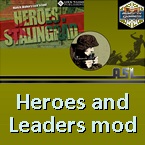asl3d
Posts: 6531
Joined: 2/6/2017
Status: offline

|
In Italia the anti-Fascist movements cautiously revived in 1942 and 1943. The movement that rose among Italians of various social classes is also known as the Italian resistance and the Italian partisans. The Communists helped to organize strikes, the leading Roman Catholics formed the Christian Democratic Party in 1943, and the new Party of Action was founded in January 1943, mainly by republicans and Radicals. Leading Communists began to reenter Italy, and their party began to put down deep roots across the country. By this time most of the leading clandestine parties were more willing to work together to overthrow fascism. In March 1943 they signed an agreement to do so. The Italian resistance movement (La Resistenza italiana or just la Resistenza) is an umbrella term for Italian resistance groups during World War II. It was opposed to the forces of Germany as well as their puppet state local regime, the Italian Social Republic, especially following the German military occupation of Italy between September 1943 and April 1945. Partisans were fighting three types of war: a civil war against Italian Fascists, a war of national liberation against German occupation, and a class war against the ruling elites. After September 1943, partisan Resistance groups were active throughout northern and much of central Italy. Often they were former soldiers cut off from home and still in possession of their weapons. The Communist Party, although still very small in 1943 (about 5,000 members), led the largest group of partisans (at least 50,000 by summer 1944), drawing on years of experience in underground organization and on Yugoslav support. The partisan strength was at around 70,000-80,000 by May 1944. Some 41% in the Garibaldi Brigades and 29% were Actionists of the Giustizia e Libertà Brigades. One of the strongest units, the 8th Garibaldi Brigade, had 8,050 men (450 without arms) and operated in the Romagna area. The CLN mostly operated in the Alpine area, Apennine area and Po Valley of the RSI, and also in the German OZAK (the area northeast of the north end of the Adriatic Sea) and OZAV (Trentino and South Tyrol) zones. The Christian Democrats included roughly 20,000 partisans, and both Socialists and Liberals had significant armed bands in some areas. Partisans of different political persuasions normally worked together in local Committees of National Liberation (CLNs), which coordinated strategy, cooperated with the Allies, administered liberated areas, and appointed new officials. Above all, they organized the uprisings in the northern and central cities, including Milan in April 1945, which fell to the partisans before Allied troops arrived. In some cities the partisan liberation appeared to be a revolution—as in Genoa, Turin (where the Fiat factories were occupied), and Bologna—and red flags, Italian flags, and American flags greeted the “liberating” Allied troops. In all, about 200,000 partisans took part in the Resistance, and German or Fascist forces killed some 70,000 Italians (including both partisans and civilians) for Resistance activities.

 Attachment (1) Attachment (1)
< Message edited by asl3d -- 11/2/2019 7:48:18 PM >
_____________________________
Semper fidelis
|
 Printable Version
Printable Version





































 New Messages
New Messages No New Messages
No New Messages Hot Topic w/ New Messages
Hot Topic w/ New Messages Hot Topic w/o New Messages
Hot Topic w/o New Messages Locked w/ New Messages
Locked w/ New Messages Locked w/o New Messages
Locked w/o New Messages Post New Thread
Post New Thread